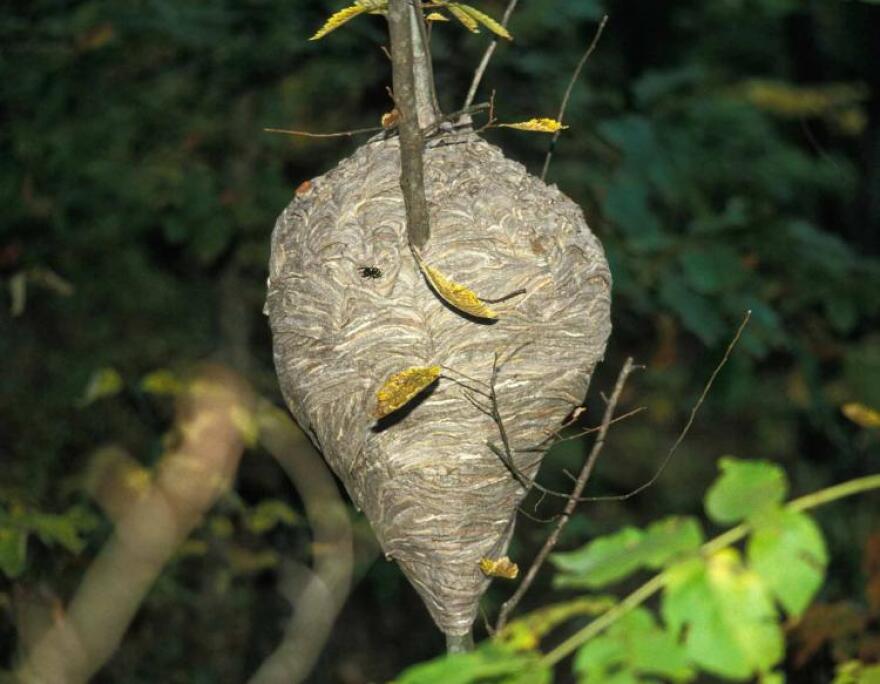Discover Nature in the Missouri woods this week and scan leafless trees for the gray nests of bald-faced hornets.
These wasps chew wood, mix it with starches in their saliva, and use this substance to make their nests, which consist of layered, horizontal comb, enclosed by an outer envelope.
Each colony of these social wasps lasts only one year, with new nests built annually.
In spring, a single overwintered queen begins each nest. Through the summer she lays eggs and builds her colony as they hatch and mate, producing infertile female workers, male drones, and new queens.
As temperatures drop and autumn begins, new queens find a protected place to hibernate outside the nest.
By winter, the whole colony of hornets dies, leaving only the fertilized queens to emerge in spring and begin building new colonies.
Adult bald-faced hornets provide ecological benefits as pollinators, and hunt many types of insects and spiders.
They’re generally not aggressive away from their nests, which are typically high off the ground and pose little problem for people.
Learn more about Missouri’s native bald-faced hornets, see images of inside their nests, and find other things to watch for in the fall woods with the Missouri Department of Conservation’s online field guide.
Discover Nature is sponsored by the Missouri Department of Conservation.





